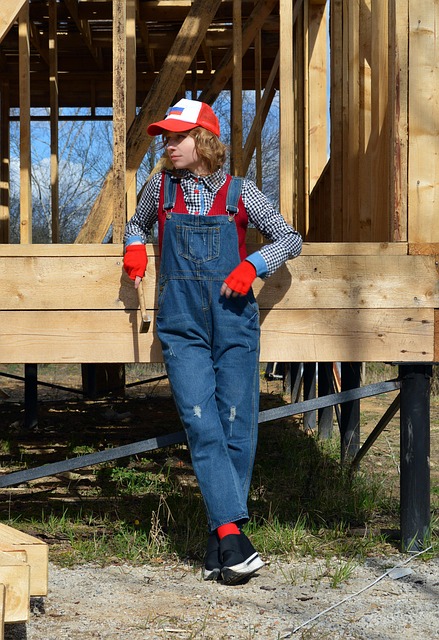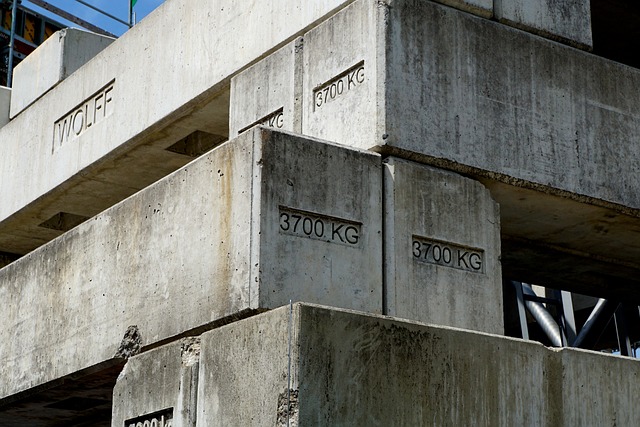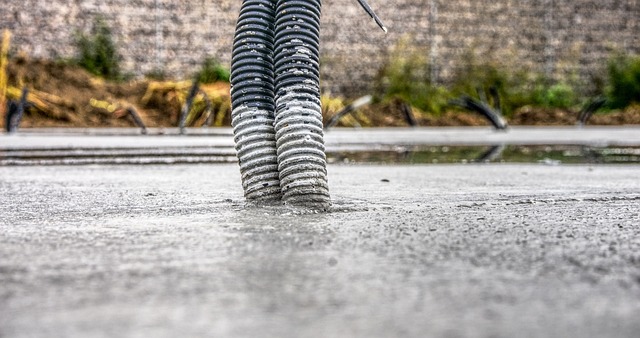Residential concrete foundation damage, driven by settlement, heave, or water intrusion, requires prompt action for structural stability. Early detection through inspections reveals cracks, uneven floors, or stuck doors. Key repair methods include underpinning, piering, and slab jacking for settling issues, with epoxy injections for crack filling. Traditional concrete patching and expert structural analysis by engineers ensure long-lasting solutions. Accurate cost estimates from contractors guide budgeting, while regular maintenance prevents future damage through crack sealing, drainage improvements, and soil level management.
Residential concrete foundation repair is a critical aspect of home maintenance, addressing structural integrity and longevity. This comprehensive guide delves into the intricate world of repairing damaged foundations, offering insights for homeowners. We explore common causes of issues, from settling soils to poor construction, and present both non-invasive and traditional repair methods. Understanding the role of structural engineers and budgeting for projects is essential. Learn preventative measures to safeguard your home’s foundation against future damage, ensuring a sturdy and durable residential structure.
Understanding Residential Concrete Foundation Damage

Residential concrete foundation damage can arise from various factors, including settlement, heave, or water intrusion. Settlement occurs when the soil beneath the foundation compacts, causing cracks and uneven floors. Heave, on the other hand, is caused by changes in moisture levels in the soil, leading to swelling and potential structural shifts. Water intrusion, especially during heavy rainfall or poor drainage, can cause significant damage by weakening the concrete and leading to the growth of mold and mildew.
Regular inspections are crucial for identifying these issues early on. Homeowners should look out for signs like cracks in walls, floors that are uneven or slanted, doors and windows that stick, or visible gaps around foundation elements. Addressing foundation problems promptly is essential for preventing further damage and ensuring the structural integrity of the home. This often involves specialized techniques such as underpinning, piering, or slab jacking, which are key components of effective residential foundation repair.
Common Causes of Foundation Issues in Homes

Foundation issues in homes are prevalent and can arise from various factors, often leading to costly repairs if left unattended. One of the primary causes is ground movement, such as settlement or shifting due to changes in soil composition or moisture content. This can be a result of poor initial construction, inadequate soil preparation, or nearby heavy machinery operations. Another common cause is water intrusion, where excess moisture seeps into the concrete, causing it to expand and contract, leading to cracks and structural damage over time.
Uncontrolled moisture levels from improper drainage systems or leaks in plumbing are significant contributors. Moreover, outdated or defective building materials, including weak concrete mixes or inadequate rebar reinforcement, can compromise the foundation’s integrity. Termite infestations also pose a threat, as these pests can cause extensive damage to wooden elements, leading to misalignment of structural supports and potential foundation failure. Regular inspections and prompt addressing of any issues are vital for effective residential foundation repair.
Non-Invasive Repair Methods for Homeowners

When it comes to residential foundation repair, homeowners often seek non-invasive methods that minimise disruption and preservation of their living space. Modern technology offers several innovative solutions for effective concrete foundation repair without the need for extensive excavation or destruction. One such method is the use of epoxy injections, which fill cracks and voids in the concrete structure, providing stability and preventing further damage. This process is environmentally friendly, quick to implement, and requires minimal site preparation.
Another popular option is the installation of underpinning systems, like piering or piling, that transfer the load from the existing foundation to a new, more stable support system below ground level. These techniques are particularly useful for homes with settling issues or uneven foundations, allowing homeowners to enjoy a secure and stable living environment without major structural modifications.
Traditional Concrete Foundation Repair Techniques

In the realm of residential foundation repair, traditional techniques have long been the cornerstone of structural stability. These methods involve a meticulous process that starts with thorough inspection to identify cracks, settling issues, or other signs of damage. Once diagnosed, professionals employ various strategies such as concrete patching, where holes and cracks are filled with fresh concrete to fortify the existing structure.
For more severe cases, underpinning is a common solution. This involves installing new footings beneath the foundation to provide additional support and prevent further movement. Traditional repair techniques, when executed by skilled professionals, offer lasting solutions, ensuring the residential foundation’s integrity and longevity.
The Role of Structural Engineers in Foundation Repairs

When it comes to residential foundation repair, structural engineers play a pivotal role in ensuring the safety and longevity of homes. These professionals are often called upon to assess and diagnose issues with concrete foundations, which serve as the bedrock of any structure. With their expertise, they can identify weak points and potential structural failures before they become major problems. Structural engineers design repairs that not only fix current issues but also strengthen the foundation against future damage caused by settlement, shifting soil, or other environmental factors commonly associated with residential foundation repair.
Their involvement is crucial in developing effective and sustainable solutions for various foundation problems, such as cracks, uneven floors, and bowed walls. By employing advanced diagnostic tools and methods, engineers can determine the extent of the damage and recommend tailored repairs, including underpinning, piering, or slab jacking. Moreover, they ensure that any repair method aligns with local building codes and structural integrity requirements, guaranteeing a safe and stable living environment for homeowners.
Cost Estimates and Budgeting for Foundation Repair Projects

When budgeting for residential foundation repair, it’s essential to obtain cost estimates from reliable contractors. This initial step involves assessing the extent of damage and determining the required repair methods, which can vary based on issues like settlement cracks, heave, or water intrusion. Each method has its associated costs, ranging from simple crack patching to more complex structural repairs.
Estimation processes should consider factors such as the size and severity of the damage, labor rates in your area, material costs, and any necessary permits. It’s advisable to request detailed quotes from several contractors to ensure you’re getting a fair price. Proper budgeting allows for informed decision-making, ensuring you choose a repair method that aligns with both your needs and financial capabilities.
Preventative Measures to Ensure Long-Lasting Concrete Foundations

Regular inspection is key to preventing concrete foundation issues. Homeowners should regularly check for cracks, bulges, or any signs of settling in their foundation walls and floors. Early detection can help identify minor problems before they become major, costly repairs. Simple measures like sealing all cracks with a water-resistant sealer and ensuring proper drainage around the foundation can significantly reduce moisture ingress, which is a leading cause of concrete deterioration.
Additionally, maintaining proper soil levels around the foundation is crucial. Eroded or uneven soil can exert excessive pressure on the concrete, leading to cracks and settlement. Regularly checking and adjusting soil levels, as well as installing adequate drainage systems, can help preserve the structural integrity of your residential foundation repair over time.
